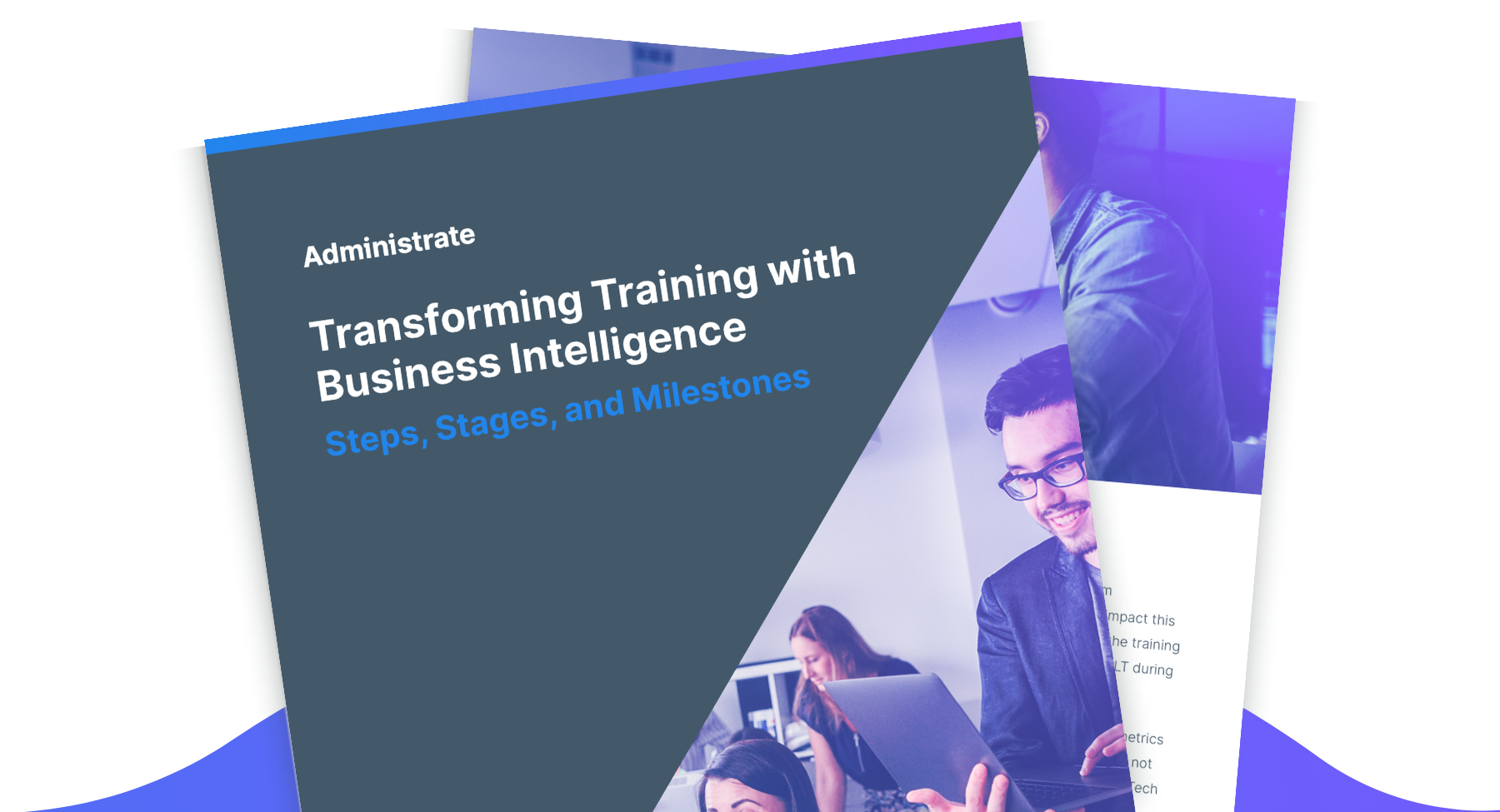Data Snapshots Are the Beginning of Something Big
At the turn of the last century, New York City and other metropolises saw the rise of a new artform, one that oddly enough has much to teach us about modern training, learning analytics, and Business Intelligence.
By 1900, photography had been nearly perfected. It was wildly popular, and considered miraculous for capturing moments frozen in time. But as intriguing as a photograph was, it betrayed the reality of life in motion. This is why avant garde artists started experimenting with actualities – or the first movie clips.
In their early state, actualities recorded daily life on film – a crowded street, people strolling in the park – but there was no context, and these were not stories. That is, until motion pictures arrived on the scene. The evolution from the mere recording of activity to the arc of storytelling was incited by a technological change, and thus documentaries were born.
Now, life was shared in the context of a story and people could use film to learn about, and learn from, the past in context. History had applied delivered value.
How to Put Your Training Data into Motion
Many training programs are stuck reporting on moments frozen in time – capturing activity in reports, but without context they are just snapshots that lack motion. They do not tell a story, they do not show training’s business impact. They report on what has already happened, they do not inform a creative future.
To make the leap from mere activity reporting to learning analytics means leveraging data you already have from information, to real insight, to sophisticated intelligence. This trajectory offers your team the ability to tell the story of how your work impacts the larger organization.
Jump Right In: [GUIDE] Transforming Training with Business Intelligence
Where do you begin?
Here are some organizational attributes to consider as you evaluate where your organization stands on this learning analytics trajectory.
Adapting to a new stage along this trajectory can be challenging, but there are milestones to guide your team along the way. These attributes will help you identify and assess opportunities to move forward, as well as arm yourself with powerful levers to propel your team to the next stage.
Training Data Maturity Stage 1: Information on Learning Activity
At this stage, a team is gathering information on training operations. That information isn’t contextualized, or even deeply analyzed. The process of data collection is often manual, resource intensive, and not scalable. The information gathered in this stage is, however, a critical foundation for moving forward.
Signals That You’re Ready to Move to Data Insights
If your team is experiencing specific resistance to scaling data collection and analysis, it’s a sign you are ready to move from Information to Insights. Here are common signals:
- Scaling training operations using manual processes that ultimately prove to be deadends. Data collection that fills more and more spreadsheets.
- The data in spreadsheets, often gathered by hand from disconnected systems, struggles to answer how and why questions that are critical to showing training’s impact.
- Connecting training to business goals is nearly impossible.
Levers for Advancement
These are some useful levers your team can use to launch out of Information and into the Insights stage.
- Focus on reducing the manual efforts required to collect information.
- Connect systems through integration to streamline data sharing.
- Leverage automation to scale the collection of real-time data.
- Use learning technology for change-management by prioritizing your team’s agility.
Training Data Maturity Stage 2: Insight into Learning Impact
At this stage, information is contextualized. Your team experiences true data-empowerment. Learning analytics reveal insights into why training is (or isn’t) impacting business. You can tell a story that shows how training is impacting the business, and you can pinpoint important correlations in real-time data.
When Are You Ready for Data Intelligence?
Many teams reach the Insights stage – which is so small feat – only to plateau here. The difference between Information and Insights is dramatic, and it can be difficult to imagine what the Intelligence stage is actually like. Here’s the big difference: at the Insights stage you’re only able to look into the past to understand the present. When you’ve reached the Intelligence stage, you are routinely forecasting future states.
So, when it’s easy to answer the how and why questions about how your training operations build impact, then it’s time to consider how to evolve into a proactive learning analytics model. Consider these questions:
- What do the answers to your questions reveal about the future of your training? The future of your business?
- Can you analyze past data to forecast future states?
- Are your insights allowing strategies to take shape with less compromise?
Levers for Advancement
Many training teams move beyond the Insight stage by deploying a training management system – an infrastructure or platform approach that connects learning infrastructure to business systems.
Training operations systems offer highly configurable, native and custom integrations, and an open API to prioritize operational agility and data-driven analytics.
Data Maturity Stage 3: Training Intelligence for Business Decisions
This is the apex of learning analytics. It’s the next best thing to a real crystal ball.
How You Know You’ve Arrived
At this stage, automation has made data capture and analysis seamless. Reporting on program effectiveness merely requires you to filter data and the process can be automated. Time spent in Stage 1 is completely returned to the team, time that can be used to focus instead on strategic planning and deeper data analysis. The data gathered at this stage is both broad and deep, allowing for a vast variety of options for analysis and implementation.
It becomes easy to demonstrate training ROI, reveal new ways to leverage strengths and shore up weaknesses across the organization, and finally realize data-driven decision making. This provides a unique competitive advantage by forecasting – with accuracy – how training will impact the future, rather than just sharing data about the past.
Start Your Own Journey Toward Learning Analytics
Learning analytics, powered by training operations infrastructure, has arrived for training teams. Advancing along this trajectory is possible, and in an era that requires rapid response to change, data-driven decision making is no longer a luxury.
Consider where your organization falls on this path, and make the shift now to embrace learning analytics, with this guide.








.png)




